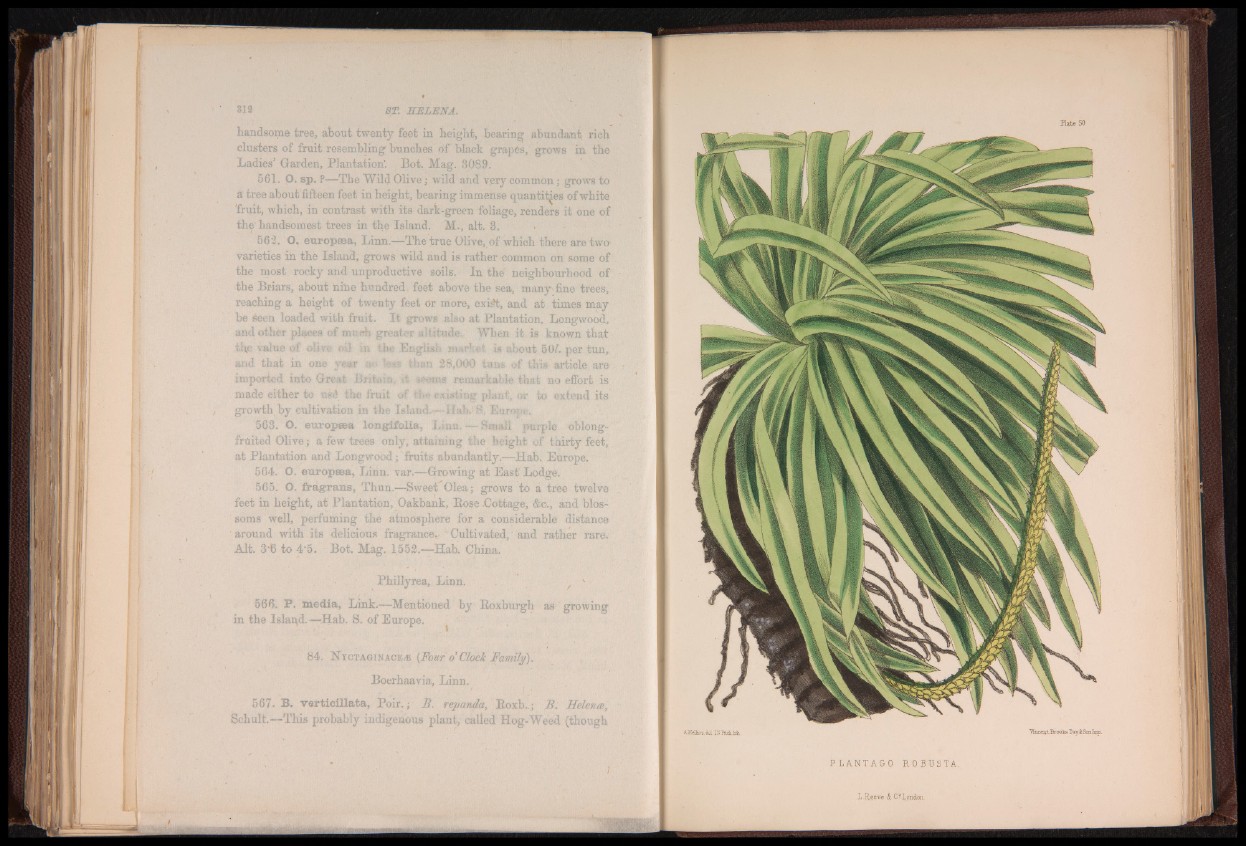
ST. SE L E N A .
handsome tree, about twenty feet in height, hearing abundant, rich
clusters of fruit resembling bunches of Mack grapes, grows in the
Ladies’ Garden, Plantation'. Bot. Mag. 8089.
561. p. sp. P—The Wild Olive; wild ahd very common; grows to
a tree about fifteen feet in height, bearing immense quantities of white
'fruit, which, in contrast with its dark-green foliage, renders it one of
the handsomest trees in the Island. M., alt. 3.
562. O. europsea, Linn.—The true Olive, of which there are two
varieties in the Island, gro ws wild and is rather common on some of
the most rocky and unproductive soils. In the neighbourhood of
the Briars, about nifie hundred feet above the sea, many fine trees,
reaching a height of twenty feet or more, exi#t, and at times may
be Seen loaded with fruit. I t grows also at Plantation, Longwood,
and other places of much greater altitude. When it is known that
luo of olive oil in the English market is about 50/.. per tun,,
one year m less than 28,000 tuns of this article are
Great • Britain, %i seems remarkable that no effort is
her to vi«o the fruit of the existing plant', or to extend its
th by cultivation in the Island.—Hah.1 B, Europe.
O. europsea longifolia, Linn. — Small purple oblong-
fruited Olive; a few trees only, attaining the height of thirty feet,
at Plantation and Longwood; fruits abundantly.—Hab. Europe.
564. O. europsea, Linn. var.—Growing at East' Lodge.
566. P
in the Islaqd —Hab. S. of Europe.
by Roxburgh as growing
84. N yct St® , r o Clock Family).
Boerhaavia, Linn
567. B. v ertic illata, Poir. ; B. repanda, Roxb,.;
Schult.—This probably indigenous plant, called H
[
B. Helena,
og-Weed (though